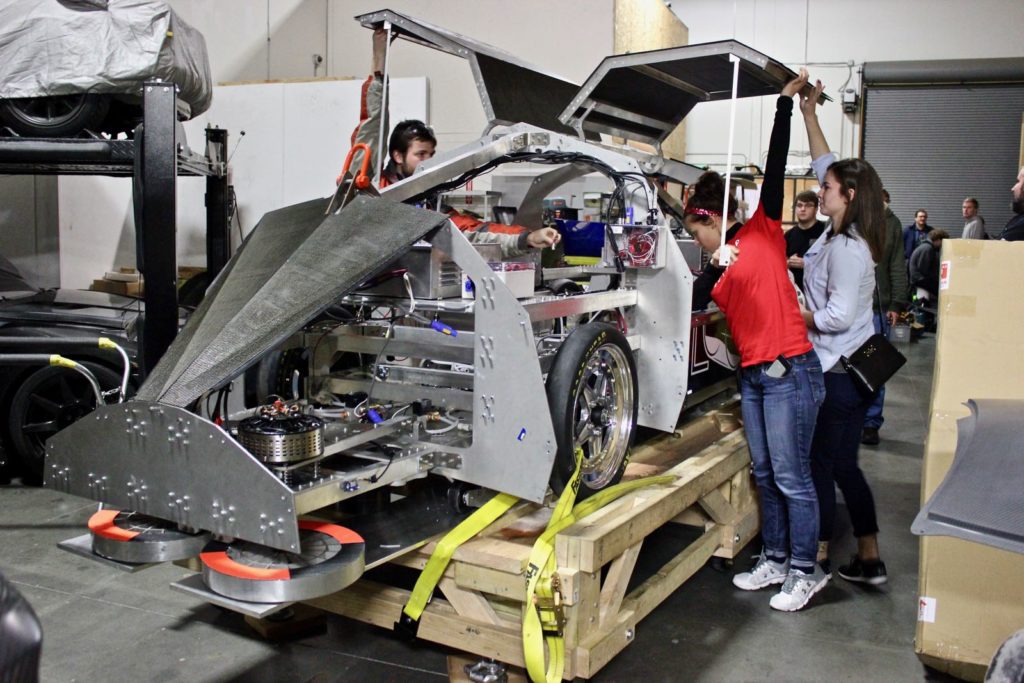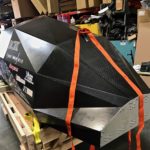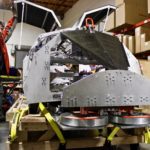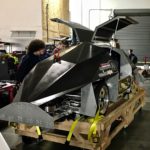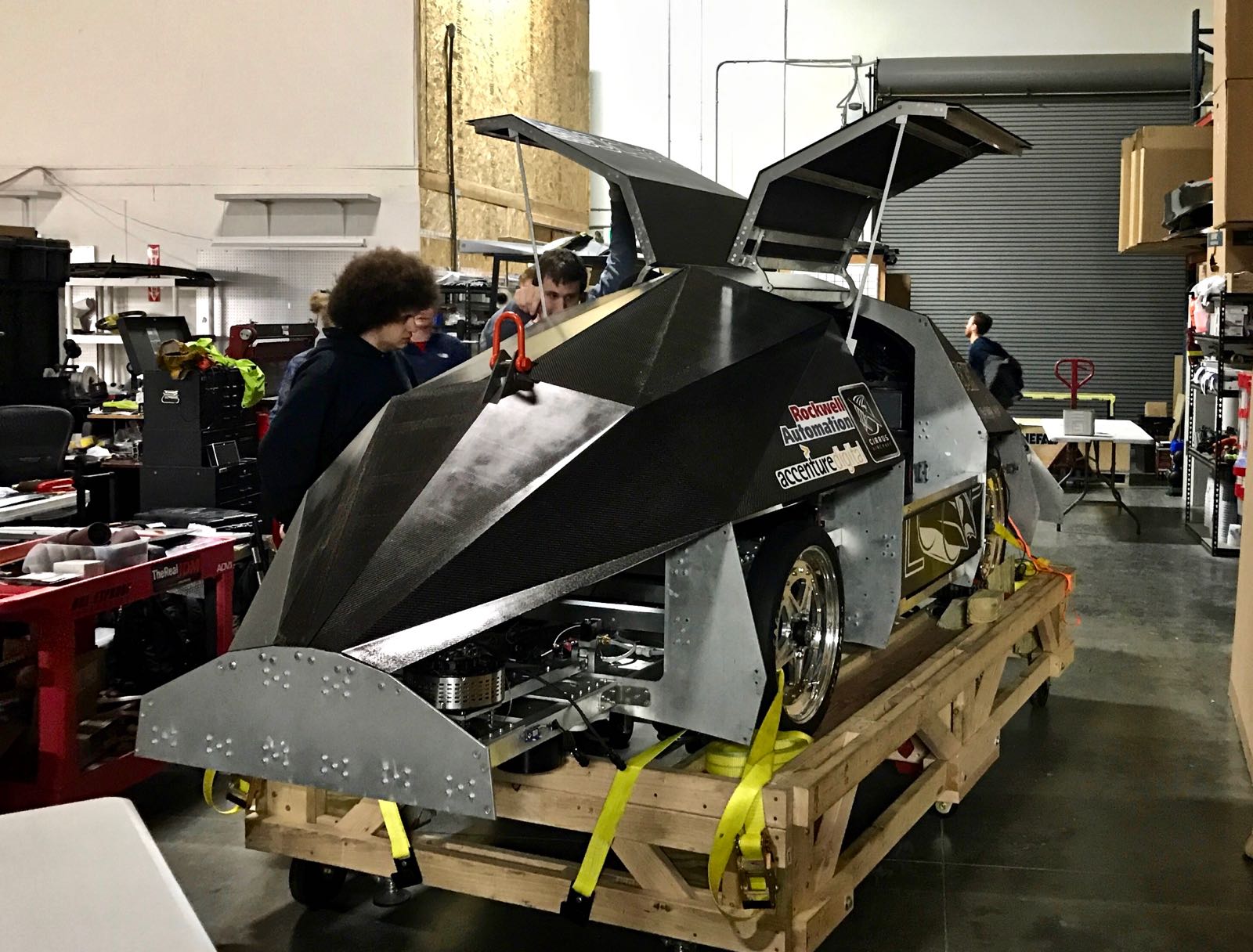
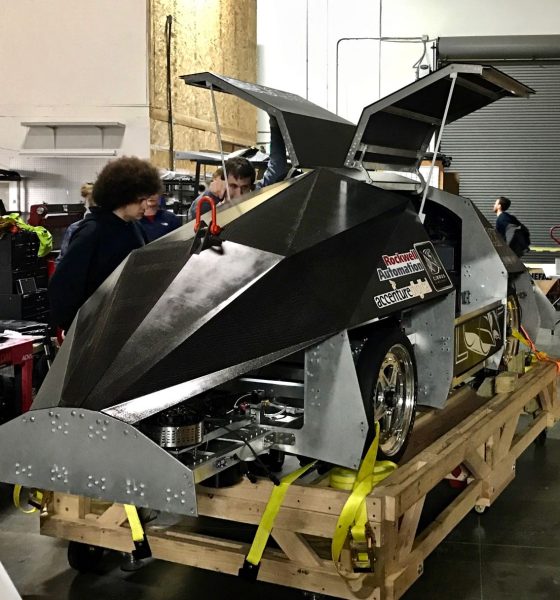
News
SpaceX Hyperloop Pod Competition underway: Badgerloop unveils pod design
Day 1 of SpaceX’s long awaited Hyperloop Pod Competition is underway in Hawthorne, California. Approximately thirty teams competing in the SpaceX-sponsored event including the winner from last year’s Hyperloop Design Weekend, MIT, will be judged on four categories ranging from safest and most reliable pod to best performing while in flight.
We had a chance to go behind the scenes with University of Wisconsin-Madison’s BadgerLoop team to witness what it takes to prepare for the high speed competition. Those following Hyperloop developments may recall that Teslarati interviewed BadgerLoop after the team won the Pod Technical Excellence award last year and qualified for this weekend’s Pod Competition.
For the select thirty-plus members of BadgerLoop out of a total of one hundred and sixty team members contributing to the project, many of whom are undergraduates at University of Wisconsin-Madison, the experience of traveling 2,000 miles to the home of SpaceX to compete hasn’t really sunk in. “The entire team just went crazy as we rounded the corner on Rocket Road and saw SpaceX’s Falcon 9 rocket resting there. It was surreal.” says Claire Holesovsky, third year Junior and Operations Director for Badgerloop.
Kali Kinziger, third year Junior and Industry Relations Lead at Badgerloop tells us that the team has been working around the clock all week out of SpaceX’s testing facility during the day, where Hyperloop pods from competing teams undergo a series of structural and mechanical inspections conducted by SpaceX employees, and from nearby Unplugged Performance during the evenings, leading up to Friday’s start of competition.
Duncan Adams, BadgerLoop’s Technical Director and fifth year Senior in Mechanical Engineering who interned at SpaceX last year, gave us a tour of their award-winning pod concept. The core of the pod is an aluminum chassis outfitted with four 90 horsepower electric motors – two in the front and two in the back – that leverage Halbach arrays to create a magnetic field that passes over Hyperloop’s I-beam sub track . It’s enough to keep the 2,100 pound pod (second largest pod amongst all teams competing) traveling near 200 mph and smoothly along the track. Duncan tells us that the pod was designed for a person six-foot two inches. Why? “We just want to see Elon in the pod”, says Claire.
The carbon fiber skinned pods will be propelled by a 140V, 1000 AMP battery. Duncan tells us that SpaceX will utilize a pusher to initiate movement of the pod before team’s are expected to self-propel their pods. Demonstration of pods will take place over three days and BadgerLoop is expected to demonstrate their Hyperloop pod on Sunday.
For the BadgerLoop team, this weekend’s pod competition will be an invaluable learning experience that can’t be taught. “The learning experiences we have gained are far greater than the curriculum we receive in the classroom. We are able to build off our classroom knowledge by getting hands-on experience with the outside world.” says Kali.
Updated: Previous video showing the BadgerLoop team going through a pod fitment test on SpaceX property was removed by request.

Elon Musk
SpaceX issues statement on Starship V3 Booster 18 anomaly
The incident unfolded during gas-system pressure testing at the company’s Massey facility in Starbase, Texas.

SpaceX has issued an initial statement about Starship Booster 18’s anomaly early Friday. The incident unfolded during gas-system pressure testing at the company’s Massey facility in Starbase, Texas.
SpaceX’s initial comment
As per SpaceX in a post on its official account on social media platform X, Booster 18 was undergoing gas system pressure tests when the anomaly happened. Despite the nature of the incident, the company emphasized that no propellant was loaded, no engines were installed, and personnel were kept at a safe distance from the booster, resulting in zero injuries.
“Booster 18 suffered an anomaly during gas system pressure testing that we were conducting in advance of structural proof testing. No propellant was on the vehicle, and engines were not yet installed. The teams need time to investigate before we are confident of the cause. No one was injured as we maintain a safe distance for personnel during this type of testing. The site remains clear and we are working plans to safely reenter the site,” SpaceX wrote in its post on X.
Incident and aftermath
Livestream footage from LabPadre showed Booster 18’s lower half crumpling around the liquid oxygen tank area at approximately 4:04 a.m. CT. Subsequent images posted by on-site observers revealed extensive deformation across the booster’s lower structure. Needless to say, spaceflight observers have noted that Booster 18 would likely be a complete loss due to its anomaly.
Booster 18 had rolled out only a day earlier and was one of the first vehicles in the Starship V3 program. The V3 series incorporates structural reinforcements and reliability upgrades intended to prepare Starship for rapid-reuse testing and eventual tower-catch operations. Elon Musk has been optimistic about Starship V3, previously noting on X that the spacecraft might be able to complete initial missions to Mars.
Investor's Corner
Tesla analyst maintains $500 PT, says FSD drives better than humans now
The team also met with Tesla leaders for more than an hour to discuss autonomy, chip development, and upcoming deployment plans.

Tesla (NASDAQ:TSLA) received fresh support from Piper Sandler this week after analysts toured the Fremont Factory and tested the company’s latest Full Self-Driving software. The firm reaffirmed its $500 price target, stating that FSD V14 delivered a notably smooth robotaxi demonstration and may already perform at levels comparable to, if not better than, average human drivers.
The team also met with Tesla leaders for more than an hour to discuss autonomy, chip development, and upcoming deployment plans.
Analysts highlight autonomy progress
During more than 75 minutes of focused discussions, analysts reportedly focused on FSD v14’s updates. Piper Sandler’s team pointed to meaningful strides in perception, object handling, and overall ride smoothness during the robotaxi demo.
The visit also included discussions on updates to Tesla’s in-house chip initiatives, its Optimus program, and the growth of the company’s battery storage business. Analysts noted that Tesla continues refining cost structures and capital expenditure expectations, which are key elements in future margin recovery, as noted in a Yahoo Finance report.
Analyst Alexander Potter noted that “we think FSD is a truly impressive product that is (probably) already better at driving than the average American.” This conclusion was strengthened by what he described as a “flawless robotaxi ride to the hotel.”
Street targets diverge on TSLA
While Piper Sandler stands by its $500 target, it is not the highest estimate on the Street. Wedbush, for one, has a $600 per share price target for TSLA stock.
Other institutions have also weighed in on TSLA stock as of late. HSBC reiterated a Reduce rating with a $131 target, citing a gap between earnings fundamentals and the company’s market value. By contrast, TD Cowen maintained a Buy rating and a $509 target, pointing to strong autonomous driving demonstrations in Austin and the pace of software-driven improvements.
Stifel analysts also lifted their price target for Tesla to $508 per share over the company’s ongoing robotaxi and FSD programs.
Elon Musk
SpaceX Starship Version 3 booster crumples in early testing
Photos of the incident’s aftermath suggest that Booster 18 will likely be retired.
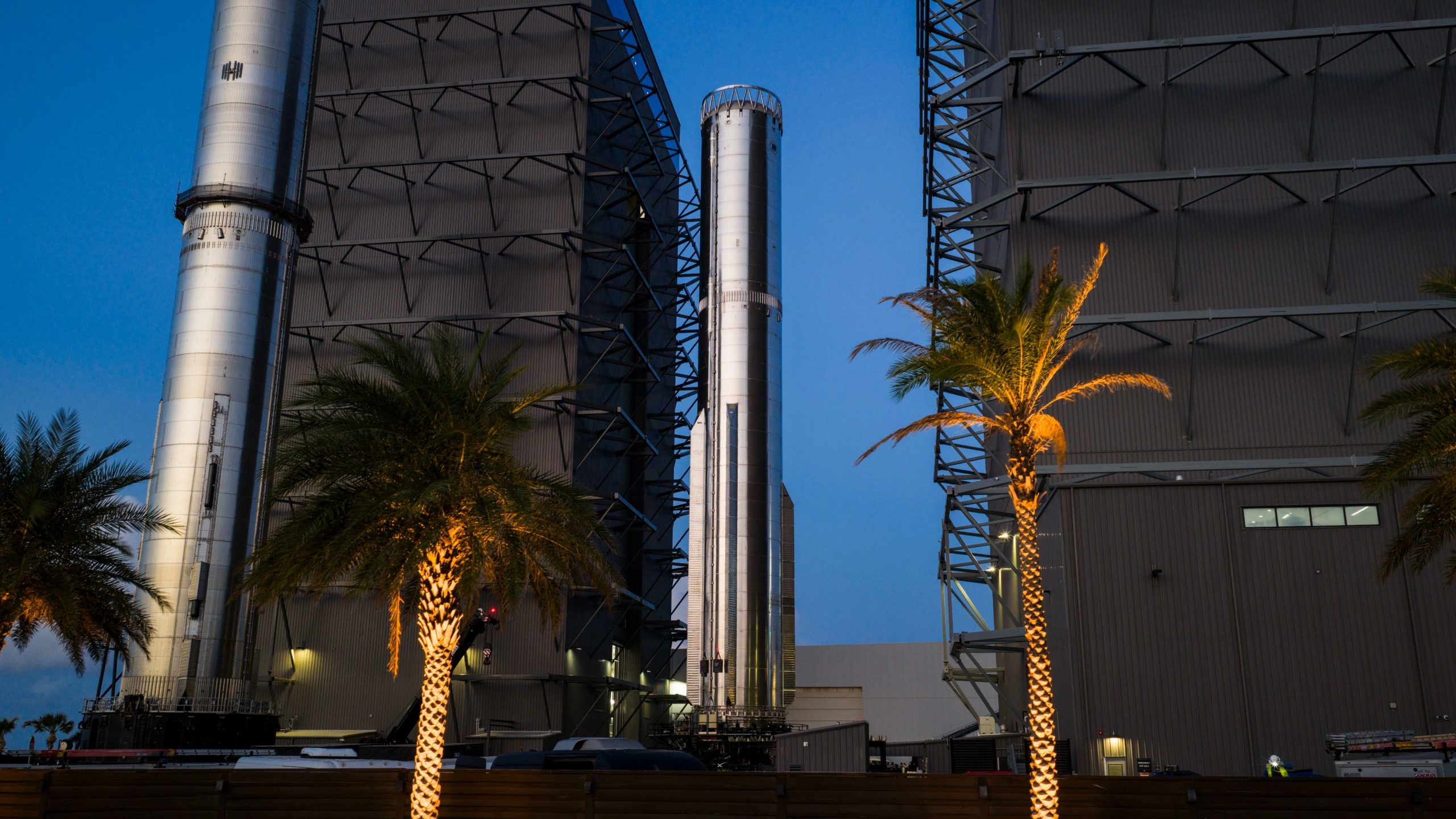
SpaceX’s new Starship first-stage booster, Booster 18, suffered major damage early Friday during its first round of testing in Starbase, Texas, just one day after rolling out of the factory.
Based on videos of the incident, the lower section of the rocket booster appeared to crumple during a pressurization test. Photos of the incident’s aftermath suggest that Booster 18 will likely be retired.
Booster test failure
SpaceX began structural and propellant-system verification tests on Booster 18 Thursday night at the Massey’s Test Site, only a few miles from Starbase’s production facilities, as noted in an Ars Technica report. At 4:04 a.m. CT on Friday, a livestream from LabPadre Space captured the booster’s lower half experiencing a sudden destructive event around its liquid oxygen tank section. Post-incident images, shared on X by @StarshipGazer, showed notable deformation in the booster’s lower structure.
Neither SpaceX nor Elon Musk had commented as of Friday morning, but the vehicle’s condition suggests it is likely a complete loss. This is quite unfortunate, as Booster 18 is already part of the Starship V3 program, which includes design fixes and upgrades intended to improve reliability. While SpaceX maintains a rather rapid Starship production line in Starbase, Booster 18 was generally expected to validate the improvements implemented in the V3 program.
Tight deadlines
SpaceX needs Starship boosters and upper stages to begin demonstrating rapid reuse, tower catches, and early operational Starlink missions over the next two years. More critically, NASA’s Artemis program depends on an on-orbit refueling test in the second half of 2026, a requirement for the vehicle’s expected crewed lunar landing around 2028.
While SpaceX is known for diagnosing failures quickly and returning to testing at unmatched speed, losing the newest-generation booster at the very start of its campaign highlights the immense challenge involved in scaling Starship into a reliable, high-cadence launch system. SpaceX, however, is known for getting things done quickly, so it would not be a surprise if the company manages to figure out what happened to Booster 18 in the near future.
